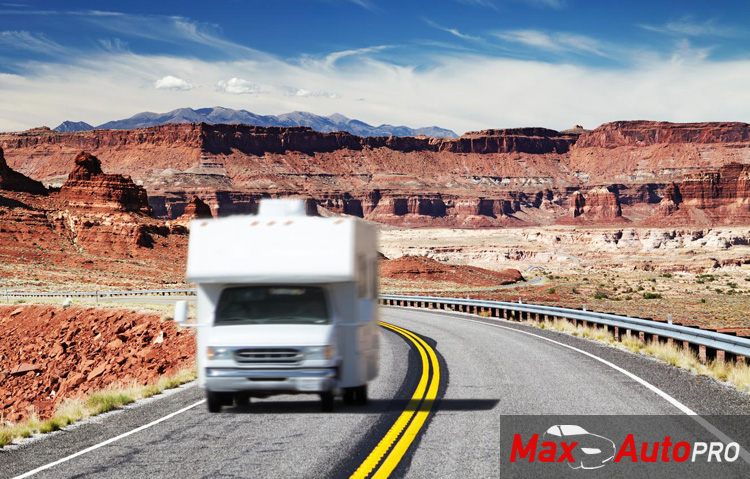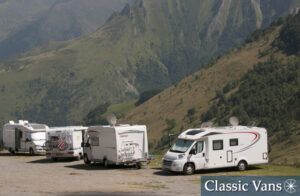
Congratulations on deciding to join the world of RV ownership! But before hitting the open road in your brand new RV, there are some safety tips you should follow:
1. Be aware of your size
Unless you’re used to driving large vehicles for your job or you’ve rented a U-Haul, chances are your new RV is the biggest vehicle you’ve ever driven. For this reason, don’t be surprised if you have to do some extra planning to be able to drive your RV comfortably. You’ll also have to learn the specifics of your vehicle, such as its weight and height.
To ensure that you’ll fit under bridges and overpasses, it’s a good idea to plan your routes with either an RV GPS or a Trucker Atlas. These tools will let you know where low bridges are as well as routes with restrictions.
Moreover, because of the size of RVs, it’s also prudent to plan your route so that you can avoid overly winding roads or having to travel through a crowded city.
Fueling up your RV can also be tricky. Preplanning your route will let you choose gas stations along your route that have large gas pump areas.
2. Consider your wide turn radius
Driving an RV also means that your maneuverability will be impacted. Given the length of some RVs, you’ll have to take much wider turns than you’re probably used to. Taking too tight of a turn could result in you going over the curb with your tires—or worse—into someone’s yard.
To ensure that you don’t go into oncoming traffic while turning, you’ll want to go into the intersection more than usual before making your turns.
3. Go slow and steady
Going fast in a large vehicle is a dangerous combination. Moreover, most people with RVs and motorhomes are in it for the journey, so why rush things? Cruising at a slower speed is important because RVs are heavy. Having that much weight will mean that your stopping time will be longer than you might be accustomed to.
Additionally, you’ll want to leave more space in between you and the car in front of you so that you’ll have more time to stop if necessary.
4. Practice good maintenance
Practicing good maintenance makes for a safe vehicle. Just like with your passenger vehicle, you should keep your preventive maintenance up-to-date and make sure your RV has its regular state inspection. It’s also a good idea to have a safety checklist for yourself before taking your RV out for a trip.
This checklist should consist of items such as checking and replacing the following parts if necessary:
- Belts and hoses
- Hitch and/or towing equipment
- Lights (headlight, tail lights, turn signal)
- Tires
5. Be weather aware
Driving in bad weather is one of the most common causes of RV accidents. Driving in fog, ice, rain and especially high winds is dangerous for an RV. Your best bet is to plan your trip so that you aren’t traveling during bad weather. If you can’t avoid driving in bad weather, at least ensure that you give yourself extra driving time so that you aren’t rushing or so you can avoid storms you didn’t plan for.
6. Practice makes perfect
One thing you should absolutely not do is purchase your RV and immediately hit the road for a trip. Before embarking on your first adventure, you should take the time to practice driving and turning your RV. Just like when you were first learning to drive, take a trip to a big, empty parking lot or dirt field and use some cones to practice turning and parking.

How Popular Are Campervans, Motorhomes & RVs in the U.S.?
Public interest in the nomadic lifestyle made possible by campervans, motorhomes and RVs is at an all-time high.
Find out more
